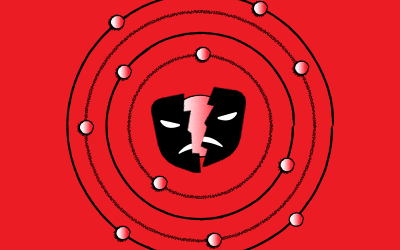As the digital era evolves, online threats and abuses are also on the rise. This is why it’s important for today’s businesses, regardless of size and industry, to prioritize online brand protection. Many leading, high-profile companies have been affected by various brand abuse methods. However, they aren’t the only ones vulnerable to malicious activities online. Even small companies are also at risk.
There are different types of online brand abuse. To protect your brand’s reputation and overall business operations, it pays to be aware of them. Here are the ones prevalent today.
- Grey Market Trading
This pertains to the selling of authentic goods through unauthorized channels. Here, pricing disparities exist as sellers use grey market imports from countries where products are sold at a lower cost and resell them without buyer restrictions. - Selling of Counterfeit Goods
Selling fake or pirated goods are also very common today. These counterfeit products are made to look genuine and are usually sold on eCommerce and auction sites. According to a survey conducted by LocalCircles, 38% of consumers have received counterfeit products from top eCommerce sites, including Amazon and Snapdeal. - Violation of MAP Policy
Minimum Advertised Price (MAP) violations are also considered an online brand abuse method that hurt legitimate businesses. Because price is not provided, online retailers can violate MAP policy by using sales and marketing phrases, such as “Proceed to checkout to see price” or “Price upon request.” This conveys low value product and causes brand image degradation. - IP Infringement
This involves breach of intellectual property (IP) rights, including copyrights and trademarks. Online retailers or resellers mask counterfeit products by using different search terms and replacing authorized links. This makes it difficult for legitimate companies and copyrights holders to detect the counterfeit goods and unauthorized sales. - Cybersquatting
Malicious online entities called cybersquatters use and register the name and domain of a top commercially valuable brand, with the intention of selling and profiting from it. A World Intellectual Property Organization report revealed that cybersquatting grew by 12% and reached a new record in 2018. - Paid Search Scam
Scammers generate traffic by leading consumers to unsecure pages with offensive content and counterfeit products. They intercept traffic for a legitimate brand to increase pay-per-click advertising campaign costs. - Malvertising
This form of brand abuse pertains to the use of online advertising to spread malware – a malicious software designed to infect computer systems. With malvertising, cyber criminals deliver malware-laden advertisements that seem to be from legitimate brands. - Credential Stuffing Attack
With this type of cyberattack, hackers use bots to validate stolen account credentials from databases and websites and use them to gain unauthorized access to other systems. According to a survey, online retailers lose around $6 billion annually from credential stuffing. - Cryptojacking
Also known as malicious cryptomining, cryptojacking is an online threat that involves the embedment of malware patch to popular websites. The malware then infects the web browsers of visitors, and uses their computer system to mine cryptocurrency. - NFC or Contactless Payment Fraud
While Near Field Communication (NFC) technology found in smartphones and debit/credit cards has advantages, it also involves fraud risks. Cyber criminals can use stolen debit/credit card details and account credentials from eCommerce sites like Amazon and online payment sites like PayPal for unauthorized transactions.
Online Brand Protection Solution
These online brand abuse methods have huge adverse effects on businesses – from reduced website traffic and damage to reputation to loss of sales and decrease in profits. Thus, it is important that you protect your business from these abuses. One way to do so is by implementing a digital brand protection solution.
Through this kind of system, your entire digital footprint and online activities can be tracked and analyzed. It works to monitor your social media and other digital assets, as well as individuals and websites that mention or are associated with your brand. After identifying risks that may affect your customers, employees, and brand, the system will then generate results while implementing takedowns or other remedial actions. It is an innovative solution that you should consider in order to protect your brand online.



